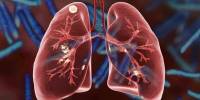Nanoparticles or nanoscale materials are used in nano-based therapeutics to transport medications, target specific cells, or perform other therapeutic tasks. Researchers at The University of Texas MD Anderson Cancer Center showed that certain nano-based cancer therapies may be less effective in younger individuals, underlining the need for more research into how aging affects the body’s ability to respond to therapy.
The researchers discovered that age-related changes are caused by how well the liver filters the bloodstream. This mechanism is more efficient in younger livers, which helps reduce toxins in the blood but also filters out therapeutic medicines, potentially rendering them ineffective.
The study, published in Nature Nanotechnology, was led by Wen Jiang, M.D., Ph.D., associate professor of Radiation Oncology, and Betty Kim, M.D., Ph.D., professor of Neurosurgery.
Our liver is designed to protect us, but for young people it might also be protecting them in a way that limits the effectiveness of nanotherapies. There is a lot of interest right now in nano-scale delivery systems and designs, but nobody has really thought about how age affects the effectiveness of these systems.
Wen Jiang
“Put simply, our liver is designed to protect us, but for young people it might also be protecting them in a way that limits the effectiveness of nanotherapies,” Jiang stated. “There is a lot of interest right now in nano-scale delivery systems and designs, but nobody has really thought about how age affects the effectiveness of these systems.” Younger livers operate so well in preclinical studies that they filter out a large amount of the nanomedicine. That indicates that these medications may be less successful in younger individuals than in older patients in some cases.”
Nanomedicines, as opposed to standard cancer therapies, use nano-scale carriers to deliver medications to the body. Depending on the therapy goal, some advantages of nanomedicine formulations can include lower toxicity, increased target specificity, and enhanced dose.
To far, the Food and Drug Administration has approved more than 50 nano-based medicines, including 19 now listed by the National Cancer Institute for use in cancer. The treatment employed in the trial was nanoparticle-albumin-bound paclitaxel, which has been used for refractory or relapsed malignancies since 2005.

Scientists do not fully comprehend all of the methods by which the liver filters the bloodstream, but earlier research has found a link between the rate of clearance and the expression of the scavenger receptor MARCO. This protein is more abundant in younger Kupfer cells, which are immunological cells found in the liver.
Following confirmation of the differential in outcomes between young and old mice, the team looked at therapeutic MARCO blockage as a feasible technique to avoid drug clearance. Blocking MARCO reduced nanomedicine uptake while improving the drug’s antitumor benefits from cancer treatments, but only in younger mice.
“This is just one example, but these results show that there may not always be a one-size-fits-all drug delivery strategy that is effective across diverse patient populations and that personalized design is warranted in future nanomedicines,” Jiang stated. “Hopefully, this study also opens the door for a more thorough investigation of the clearance process and how to overcome it.”
While this work focuses on cancer, Jiang emphasizes that it investigates a possible barrier for any nanodrug delivery technology. He emphasized that different proteins, antibodies, and viruses have different clearance pathways, but it all comes down to the liver.
















